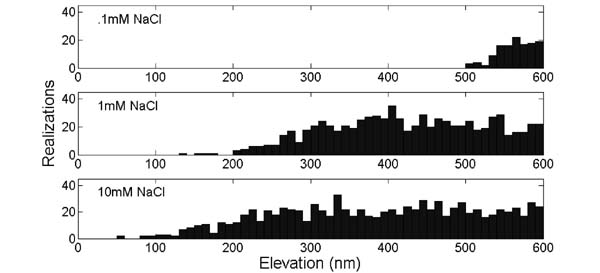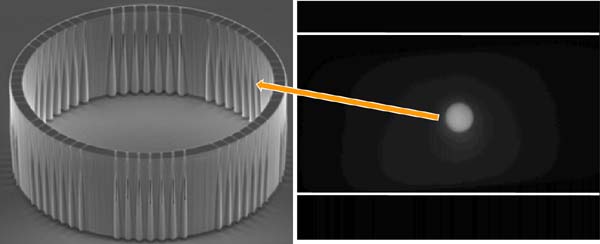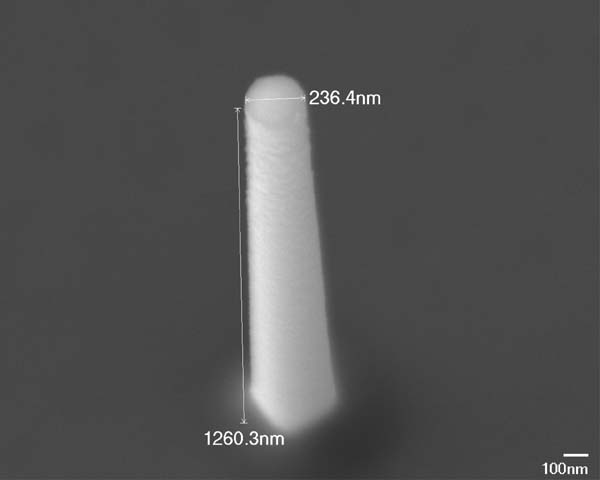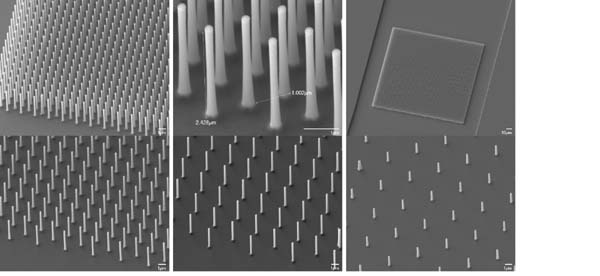Microfluidics
1. Hindered Brownian motion:


TIRFM images of sedimented 100-nm radius particles in different saline concentrations: (a) 1 mM, (b) 10 mM, and (c) 100 mM solutions. All images were taken 10 minutes after each sample was placed on cover slip. ±²2: Histograms of 100-nm radius nanoparticles¡¯ elevation data for 0.1 mM, 1.0 mM, and 10 mM NaCl solutions.
Effect of saline concentration on the minimum elevation of electrically charged nanoparticles has been examined under the electric double layer interactions with the substrate glass surface. The use of ratiometric total internal reflection fluorescent microscopy (R-TIRFM) allows three-dimensional tracking of nanoparticles in the near-wall region within 1?m from the surface and makes the measurements of minimum elevation of nanoparticles (polystyrene fluorescent nanospheres of 100, 200, and 500 nm in radii) possible for the range of salinity from 0.1 to 10 mM. Special care was taken to insure cleaned surface conditions by sonication and rinsing of the glass substrate. The laser illumination intensity and duration also had to be carefully examined to minimize photobleaching of the fluorescence emission from particles. It is reported that the minimum elevation decreases with increasing saline concentration and with increasing particle sizes, quite possibly for the first time experimentally and quantitatively.
C. H. Margraves, C. K. Choi,
and K. D. Kihm, Examination of the effect of
salinity on the minimum elevation of nano-particles using ratiometric
total internal reflection fluorescence microscopy (R-TIRFM), Experiments
in fluids, Vol. 41, pp. 173-183, 2006
2. Enzyme Reaction:


It is interesting and important to examine how synthetic creations can help reveal how living systems work. While traditional synthetic biology is generally used to describe the use of synthetic molecules for studying biological systems and engineering genetic circuits, recent trends of synthetic biology includes biologically inspired devices with the help of nanotechnology. These devices are being used to probe and manipulate biological systems and to perform new functions. For example, cell mimics, which is small volume of container having synthetic membrane to mimic cells, can be used to study single molecule reactions, to facilitate binding reactions, or to synthesize needed reagents. They can also be used to implement biochemical reaction systems and to carry out enzymatic reactions in order to better understand molecular systems and self organization at the cellular scale. The silicone-based cell mimic devices developed were fabricated by using electron beam and optical lithographies, followed by cryogenic etching and PECVD oxide deposition to create small volume containers with defined pore structures. The proposed cell mimic device has pore sizes of 20-200 nm and a volume of ~18 ¥ᆴ We have been successful in using these cell mimic devices to contain DNA and protein molecules, to carry out transcription/translation reactions with a help of Fluorescence Recovery after Photobleaching (FRAP), and to chemically sense analytes using coupled enzyme reactions. Parametric comprehensive study related to coupled enzyme reactions for glucose sensing applications will be presented as follows: effects of (1)enzyme concentrations, (2) fluidic volume flow rates, and (3) substrate concentrations. With this kind of fundamental approach by using the silicon based cell mimic devices, we would like to ultimately exploit the advantages of small volume reaction containers and selective membrane transports in order to address various biomedical applications including chemical sensing and protein production and furthermore to optimize metabolic pathways for the production of desired reagents.
Cell mimics can be used to understand molecular systems and self organization at the cellular scale.
3. New Post Array for hindered Brownian Motion:


These SEM images show new pattern of post array to examine hindered Brownian motion and hopefully we are able to revise the existing theory developed for the neutral surface of both particles and substrates.

